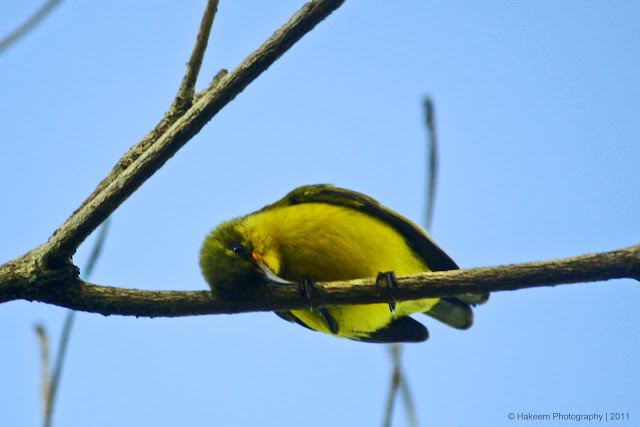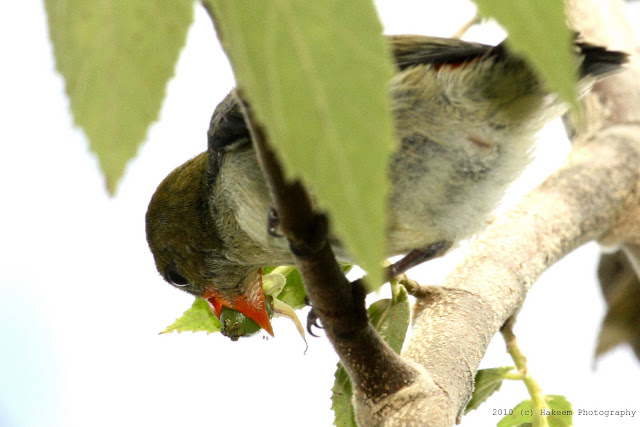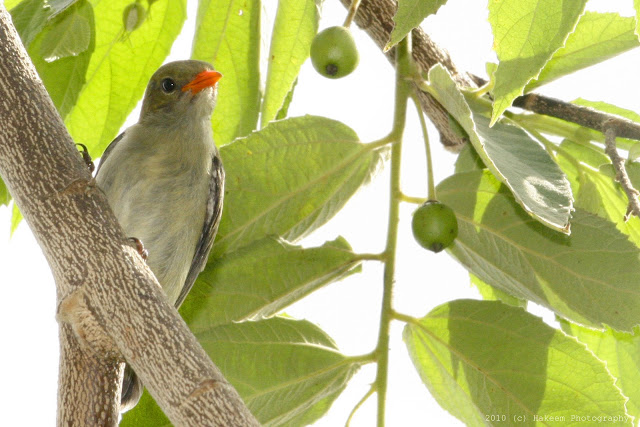Daily Photo from Hakeem, an Amateur Photographer Who Lives in Banjarmasin, Indonesia
Showing posts with label Bird. Show all posts
Showing posts with label Bird. Show all posts
Greater Coucal (Centropus sinensis)
Bubut Alang-alang - Lesser Coucal Bird (Centropus bengalensis)
Coucals are rather terrestrial, preferring to walk than fly. They emerge in the open only in the early morning. The rest of the day, they forage on foot in tall grass. When disturbed, they make a short flight with shallow wing beats and brief glides into cover. They then scuttle away on foot. They are strong runners and have straight hind claws and are sometimes called "lark-heeled cuckoos".
Lesser Coucals are mostly solitary, only rarely seen in pairs. They specialize in more open grasslands (lallang and other tall grasses) both dry and marshy, while the Greater Coucals (C. sinensis) are found in thickets.
Breeding: Lesser Coucals have a courtship ritual of offering each other titbits like a leaf or grasshopper.
Although they are members of the cuckoo family, Lesser Coucals do not lay their eggs in other birds' nests. They build their own nests. These are usually well concealed and comprise a large globe (18 x 25cm) made of twigs or grass (blades and stems) with a large entrance hole to one side. The nest is sometimes lined with green leaves and grass.
They build in open grasslands, close to the ground, incorporating tall grass stems into the nest. Less frequently, low in bushes or trees.
2-3 white eggs are laid in December-July. Hatchlings are black skinned with long bristly down. Like other Coucals, when disturbed, the chicks squirt out copious amounts of foul-smelling liquid faces.
The Coucals have the head and bill of a crow, but long tail feathers of a pheasant. In fact, in the past, they were known as crow-pheasants.
Status and threats: Lesser Coucals have adapted well to open grasslands and secondary growths that result from human interference. They are often the first to colonize a new patch of lallang and other wastelands.
Source : Indonesia Travelling.com
I'm sleepy
I'm sleepy
Bird Photography: Pure and Simple Bird Photography Pure and Simple - 1997 publication.
Bird Photography Pure and Simple - 1997 publication. Bird Photography, Pure &Simple - 1997 publication
Bird Photography, Pure &Simple - 1997 publication Art of Bird Photography: The Complete Guide to Professional Field Techniques (Practial Photography Books)
Art of Bird Photography: The Complete Guide to Professional Field Techniques (Practial Photography Books) On Feathered Wings: Birds in Flight
On Feathered Wings: Birds in Flight Creative Bird Photography: Essential Tips and Techniques
Creative Bird Photography: Essential Tips and Techniques The Birdwatcher's Guide to Digital Photography
The Birdwatcher's Guide to Digital Photography National Geographic Photographing Birds
National Geographic Photographing Birds Improve Your Wildlife Photography (Improve Your Photography)
Improve Your Wildlife Photography (Improve Your Photography) Bird Photography: Choosing the Best Destinations-Planning a Trip-Taking Great Photographs
Bird Photography: Choosing the Best Destinations-Planning a Trip-Taking Great Photographs Bird Photography: Pure and Simple
Bird Photography: Pure and Simple
Scaly-breasted Munia (Lonchura punctulata subundulata) - Juvenile
Scaly-breasted Munia (Lonchura punctulata subundulata) - Juvenile
Art of Bird Photography: The Complete Guide to Professional Field Techniques (Practial Photography Books) On Feathered Wings: Birds in Flight
On Feathered Wings: Birds in Flight The Birdwatcher's Guide to Digital Photography
The Birdwatcher's Guide to Digital Photography Creative Bird Photography: Essential Tips and Techniques
Creative Bird Photography: Essential Tips and Techniques National Geographic Photographing Birds
National Geographic Photographing Birds Bird Photography: Pure and Simple
Bird Photography: Pure and Simple Improve Your Wildlife Photography (Improve Your Photography)
Improve Your Wildlife Photography (Improve Your Photography) Photographing Wild Birds
Photographing Wild Birds Bird Photography: Choosing the Best Destinations-Planning a Trip-Taking Great Photographs
Bird Photography: Choosing the Best Destinations-Planning a Trip-Taking Great Photographs Bird
Bird
Scarlet-headed Flowerpecker (Dicaeum trochileum) - Juvenile
Scarlet-headed Flowerpecker (Dicaeum trochileum) - Juvenile
On Feathered Wings: Birds in Flight Art of Bird Photography: The Complete Guide to Professional Field Techniques (Practial Photography Books)
Art of Bird Photography: The Complete Guide to Professional Field Techniques (Practial Photography Books) The Birdwatcher's Guide to Digital Photography
The Birdwatcher's Guide to Digital Photography Creative Bird Photography: Essential Tips and Techniques
Creative Bird Photography: Essential Tips and Techniques National Geographic Photographing Birds
National Geographic Photographing Birds Bird Photography: Pure and Simple
Bird Photography: Pure and Simple Bird
Bird Photographing Wild Birds
Photographing Wild Birds Bird Photography: Choosing the Best Destinations-Planning a Trip-Taking Great Photographs
Bird Photography: Choosing the Best Destinations-Planning a Trip-Taking Great Photographs National Audubon Society Guide to Nature Photography: Digital Edition
National Audubon Society Guide to Nature Photography: Digital Edition
Subscribe to:
Comments (Atom)
All photography and text on this blog is
© 2008-2011 HAKEEM PHOTOGRAPHY. All rights reserved. No use or reproduction without prior consent.
Your donations are extremely helpful for the development of this blog. Thank you!






























